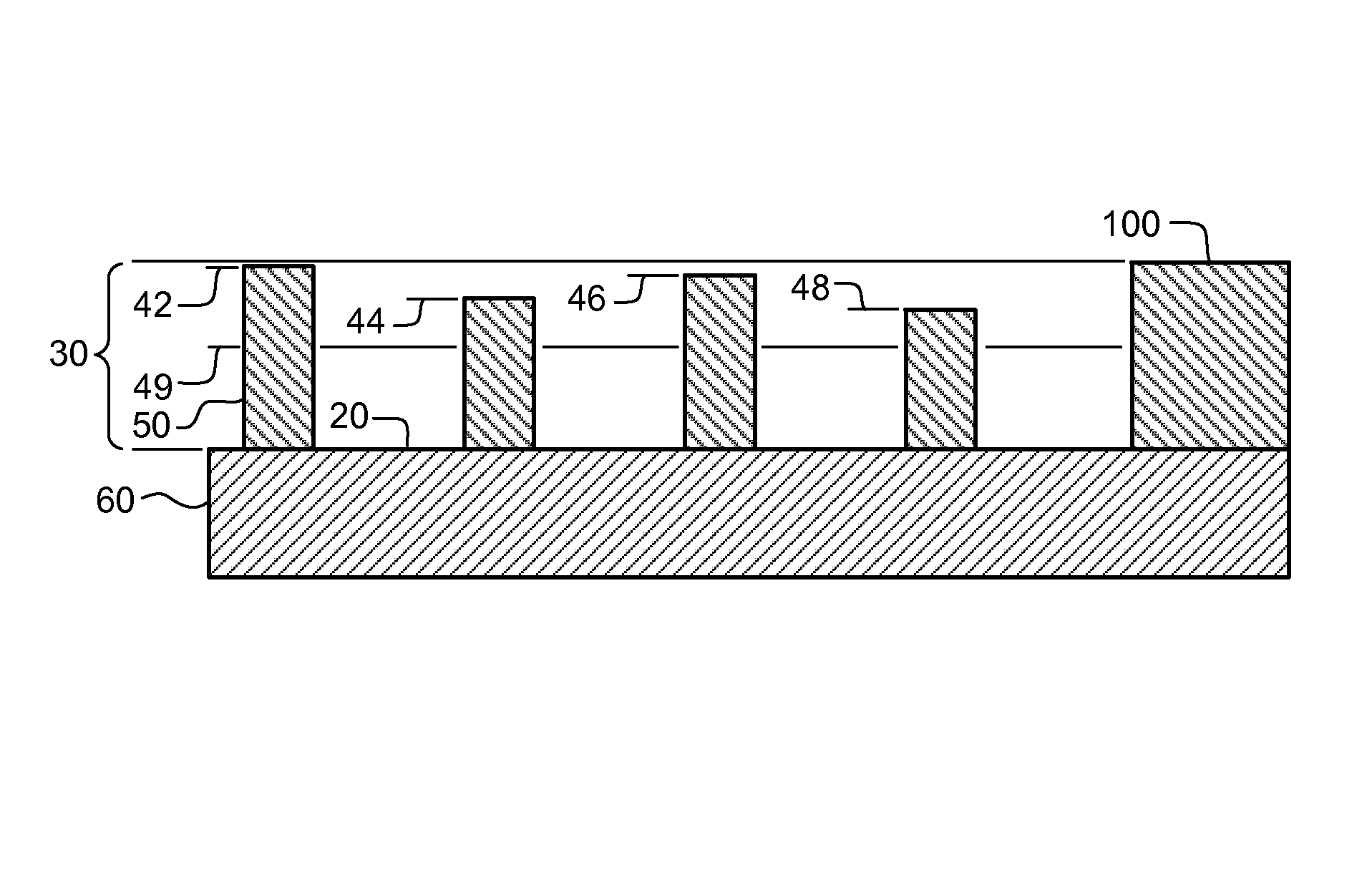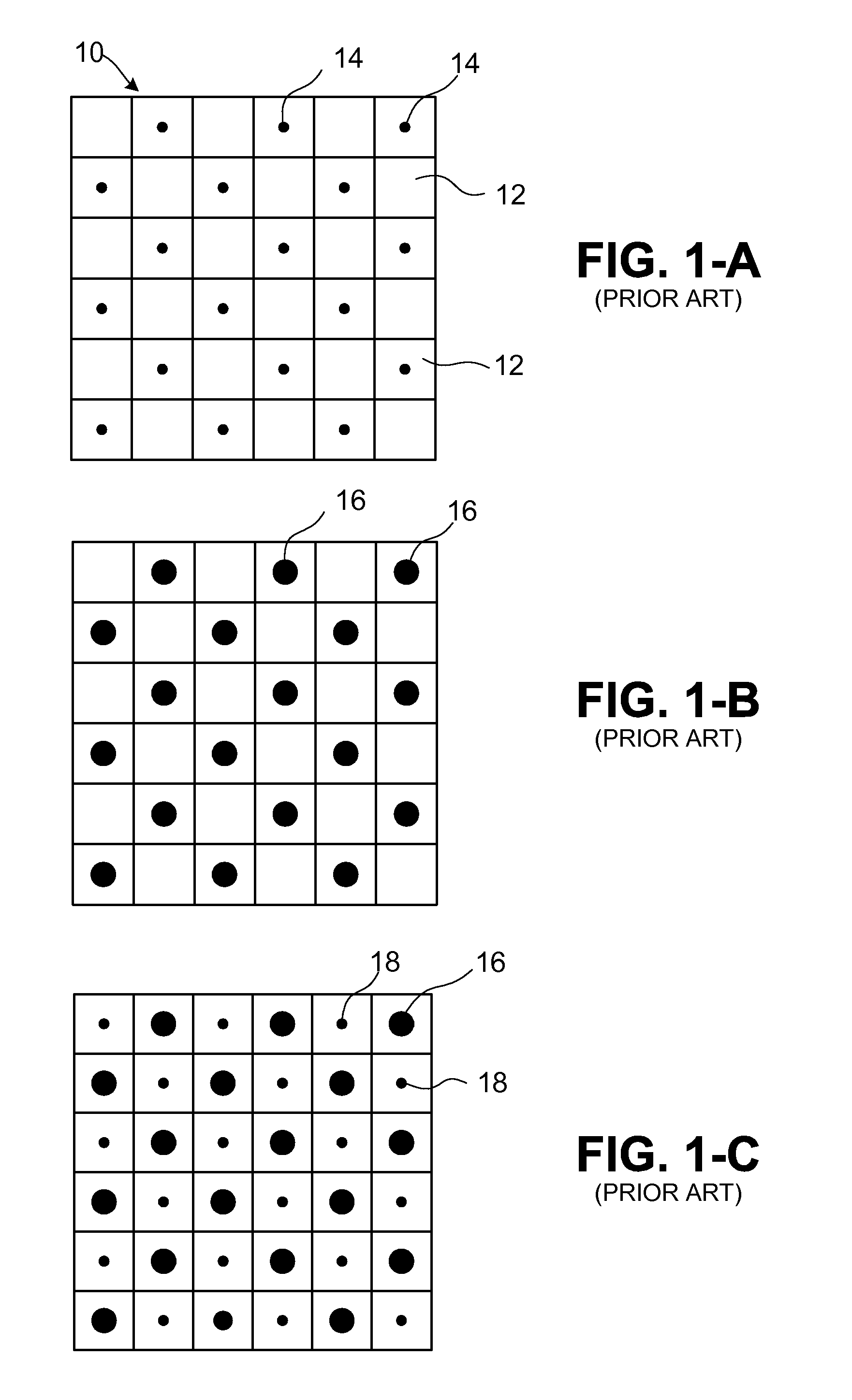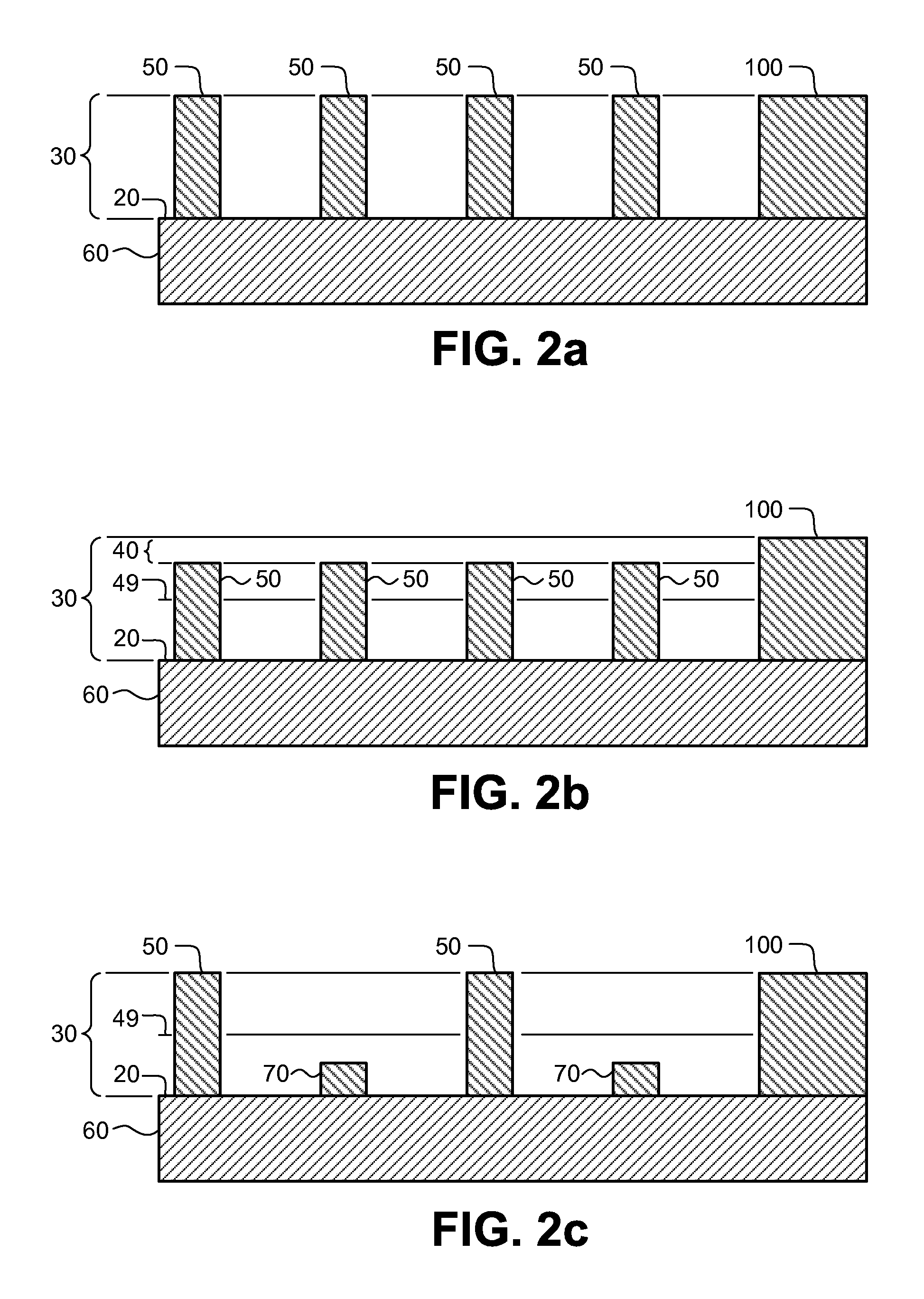Method of making flexographic printing members
a printing member and flexographic technology, applied in the field of flexographic printing, can solve the problems of high impression pressure, limited efficiency of flexographic printing plate production, and physical limitations of relief image creation process in printing member, so as to improve highlights, improve the effect of flexographic printing, and minimal loss of resolution or edge definition
- Summary
- Abstract
- Description
- Claims
- Application Information
AI Technical Summary
Benefits of technology
Problems solved by technology
Method used
Image
Examples
Embodiment Construction
Definitions
[0039]The following definitions identify various terms and phrases used in this disclosure to define the present invention. Unless otherwise noted, these definitions are meant to exclude other definitions of the terms or phrases that may be found in the prior art.
[0040]The term “flexographic printing precursor” refers to the article that is used to prepare a flexographic printing member and can be in the form of flexographic printing plate precursors, flexographic printing cylinder precursors, and flexographic printing sleeve precursors.
[0041]The term “flexographic printing member” refers to articles that are imaged flexographic printing precursors and can be in the form of a printing plate having a substantially planar elastomeric topmost surface, or a printing cylinder or seamless printing sleeve having a curved elastomeric topmost surface.
[0042]The term “receiver element” refers to any material or substrate that can be printed with ink using a flexographic printing mem...
PUM
| Property | Measurement | Unit |
|---|---|---|
| thickness | aaaaa | aaaaa |
| diameter | aaaaa | aaaaa |
| depth | aaaaa | aaaaa |
Abstract
Description
Claims
Application Information
 Login to View More
Login to View More - R&D
- Intellectual Property
- Life Sciences
- Materials
- Tech Scout
- Unparalleled Data Quality
- Higher Quality Content
- 60% Fewer Hallucinations
Browse by: Latest US Patents, China's latest patents, Technical Efficacy Thesaurus, Application Domain, Technology Topic, Popular Technical Reports.
© 2025 PatSnap. All rights reserved.Legal|Privacy policy|Modern Slavery Act Transparency Statement|Sitemap|About US| Contact US: help@patsnap.com



